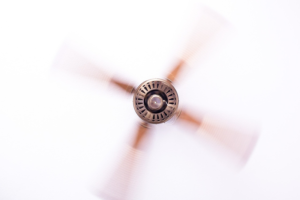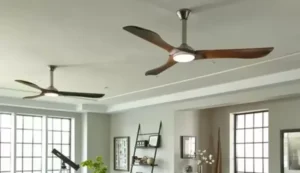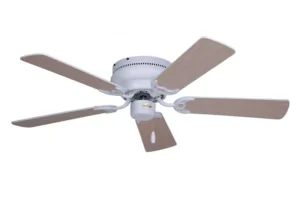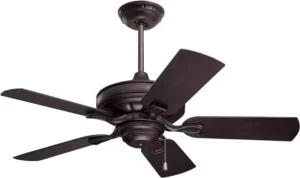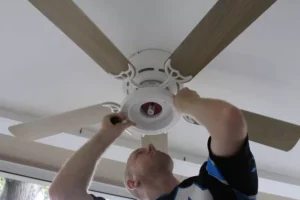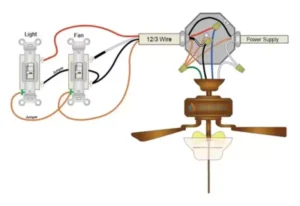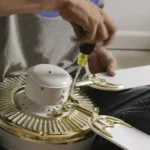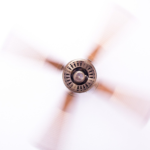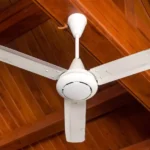The Ideal Ceiling Fan Direction for Summer and Winter
As summer season temperatures leap or wintry weather chills take keep, a simple adjustment in your ceiling fan could make all the distinction in home comfort and electricity savings. The path your ceiling fan rotates has a vast effect on how air circulates and feels in a room. via learning the ideal fan direction for each season, you could maximize cooling or heating energy even as minimizing software prices 12 months–round.
Why Does Ceiling Fan direction count?
Opposite to popular perception, ceiling fanatics don’t virtually cool or heat the air. instead, they use motion to flow into the air already found in a room. The course the blades rotate determines the movement sample and effect of that airflow.
Turning counterclockwise makes the blades spin ahead, pushing air down and creating a groovy breeze. Conversely, a clockwise rotation pulls air up and lightly redistributes the warmth that certainly rises and collects near the ceiling. the use of the proper direction prevents uncomfortable hot or bloodless air from getting trapped overhead.
The pleasant Ceiling Fan direction for summer
At some point of the hotter months, set your ceiling fan to spin counterclockwise at higher speeds. This produces an instantaneous, cooling wind-chill effect as air is forced down into the living space.
The wind-chill created via a counterclockwise fan makes the room experience as much as 4°F cooler. imagine that fresh, steady breeze you’ll feel sitting underneath a oscillating fan – that is an appropriate airflow sample to conquer the summer warmth and humidity.
I vividly consider adolescence summers wherein our home‘s excessive ceilings trapped warm, stagnant air. Flipping the fan to its maximum counterclockwise speed was an immediately relief, developing a groovy, crisp breeze that made the space sense massively greater comfortable.
Summer Time Fan Course Energy Savings
Utilising this cooling approach lets in you to raise your AC thermostat via a few degrees without sacrificing comfort. The U.S. department of strength estimates that for every 1°F you boom the thermostat, you can shop up to 3% on cooling fees.
Thinking about strength can account for a hefty portion of application payments each month, these savings surely add up over the complete summer time. Plus, decreasing AC utilization is an choice that decreases your property‘s general electricity intake and carbon footprint.
The Right Ceiling Fan Path for Winter
In less warm weather, reverse your fan’s rotation to spin clockwise at the bottom velocity. This draws the air up in the direction of the ceiling on a gentle, regular loop.
Because the air cycles up and diffuses outward, it redistributes the warm temperature that evidently rises and swimming pools overhead. The end result is an excellent, regular warm temperature that circulates comfortably at some point of the room with none harsh, direct breezes.
I find this to be notably effective in speedy warming up chilly spaces like basements or enclosed sunrooms in wintry weather. in place of blasting my critical heating device, adjusting the ceiling fan creates an frivolously dispersed thermal cutting-edge that cozy‘s up the gap naturally.
Wintry Weather Fan Path value Savings
In step with the U.S. branch of power, the use of the heating-flow approach can allow you to lower your thermostat putting by means of 4°F and not using a reduction in consolation.
Because heating charges could make up a huge portion of winter software bills, making this easy adjustment can doubtlessly reduce the ones prices through up to 15%. Prioritizing smart fan use facilitates reduce energy waste even as nonetheless maintaining your home optimally heat and toasty.
Whilst to Trade Your Ceiling Fan Course
The overall guideline is to change your ceiling fan’s rotational route while you switch over from heating to cooling mode each spring and fall. This guarantees the airflow pattern enhances your HVAC machine for max performance.
Most fanatics encompass a small transfer or pull chain to reverse the blade rotation. talk to your product manual, however the simple method is:
1. Flip off the fan completely from the wall switch
2. Look ahead to the blades to stop spinning
3. Find the directional switch, pull chain, or toggle
4. Change course to clockwise or counterclockwise
5. Flip the fan again directly to the preferred pace
Ceiling Fan Course Recap
Bear in mind, in summer season, run your ceiling fan in a counterclockwise course on higher speeds to create a cooling, wind-relax effect. In wintry weather, switch to a clockwise rotation at decrease speeds to flippantly redistribute warm air at some stage in the space.
Making this simple directional adjustment allows you to maximise consolation while minimizing heating and cooling prices. do not let power bucks visit waste – optimize your ceiling fan direction for the season now. With clever thermostat use and proper fan move, you may beat the heat or chill at the same time as taking part in 12 months–spherical energy savings.




